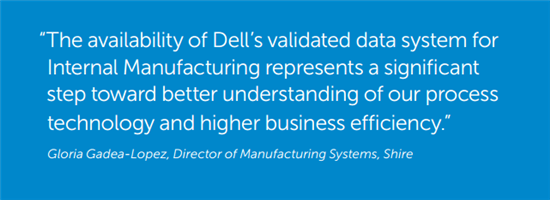In mid-June, I attended a fascinating conference on statistics for measuring, analyzing, and optimizing the validation process for Good Manufacturing Practices compliance in the pharmaceutical, biotech and medical device industries. The second annual Statistics in Validation summit brought together organizational stakeholders to examine how best to implement FDA regulatory guidance concerning the use of statistical methods in manufacturing.
Statistical analysis methods have long played a pivotal role in ensuring consistent product quality and minimal consumer risk. Analytical tools can help engineers understand the manufacturing process, as well as why and how it can be expected to yield desired robust quality with known certainty. In short, statistical analysis supports the FDA’s purpose of providing guidance for applying accepted best practices to guarantee manufactured pharmaceutical products and medical devices are safe for consumers.
Neither the FDA nor the pharmaceutical and medical device industries takes their responsibilities lightly – at all! That’s why all relevant process variables are carefully evaluated for their influence on product variability and quality over the entire manufacturing lifecycle. Detailed Standard Operating Procedures (SOPs) are drafted to ensure that processes are stable, yielding repeatable predicted quality and minimal risk.
Understandably, these segments are slow to adopt innovative methods and approaches, which already have been widely implemented in other industries. But herein lies the problem:
practically all other (non-validated) automated manufacturing sectors are replacing or enhancing statistical methods with machine learning techniques to improve overall efficiency, product yield and cost, and final product quality.
In some of the more competitive automated electronics manufacturing companies, for instance, specifically fine-tuned machine learning procedures are often considered absolutely mission-critical for competitiveness and business survival. Yet, in pharmaceutical and medical device manufacturing, these techniques are only beginning to be considered.
During my session, entitled “Machine Learning Techniques in Manufacturing: Applications & Caveats,” I made the case for how machine learning can offer manufacturers, including pharmaceutical and medical device companies, a much clearer end-to-end understanding of their manufacturing processes. Regardless of how complex or non-linear, as well as how difficult-to-articulate the interactions of process inputs may be, machine learning techniques help stakeholders understand, predict, and ultimately “lock-down” the variability of their process for consistent and robust, low-risk product quality.
For example, machine-generated data can be used to drive advanced pattern recognition methods that anticipate manufacturing problems before they occur. Using machine learning techniques, companies can predict likely product exceptions, and detect unwanted process shifts or machine maintenance issues and other expected quality problems or rework before they occur. Ultimately, this may mean that life-saving medicine and vaccines can be delivered in the quantities needed much sooner.
Now, I understand the FDA’s guidance for manufacturers to demonstrate that a process is understood, robust, and can yield repeatable quality. A common criticism of machine learning techniques, such as neural networks and deep-learning techniques, is that they yield “black-box” models that are hard to understand, document, evaluate, communicate, and manage. In my presentation, I reinforced why this is no longer a valid criticism.
Today, a vast amount of experiences exist to show how to apply machine learning methods, evaluate results, estimate confidence regions, determine variable importance, etc. Widely accepted best practices for building models and identifying important variables are well documented. In fact, one might argue that mis-specified simpler (e.g., linear) statistical models may give the illusion of interpretability when in fact they can be quite misleading.
What’s more, the plethora of new data produced by manufacturing machines can deliver better error tracking, guide predictive maintenance activities, and improve supply chain monitoring to reduce materials costs and increase product yields. Thanks to an abundance of NoSQL databases, it’s much easier, cheaper and more convenient to simply collect all the data from manufacturing machines as log files, calibration runs or event logs. Virtually all the major automated manufacturers across various domains have projects in place that use Hadoop in some form to collect and keep all process data to make it available when there’s a specific project or business problem to solve.
Statistica was specifically designed and refined over many years to support analytics in validated manufacturing, regardless of the specific methods or data sources used. We not only support model management, audit logs, version control, electronic signatures and approvals (21 CFR Part 11) for statistical models, but can apply best practices to the management of machine learning models as well. Analytic step-by-step processes can be assembled into repeatable documented workflows.
For example, specialty pharmaceutical company Shire uses Statistica to control access to validated, real-time process data and analytics in support of manufacturing operations.
Validated analytic workflow templates can be deployed easily by non-technical users to quickly build out and apply validated and proven analytic approaches to achieve better quality and lower risk. As a result, the company has made major inroads in their continuous improvement journey.
There’s really no compelling reason why proven successful machine learning techniques shouldn’t be used to improve validated manufacturing processes. Ample experience and consensus around best practices exist, along with a myriad of benefits, including faster time-to-market, more robust processes with lower variability and consumer risk—all at a lower cost.
Where does machine learning factor into your future? Connect with me on Twitter at @DrTomHill to discuss.
Image credit: Silver Blue via Creative Commons at A Health Blog

